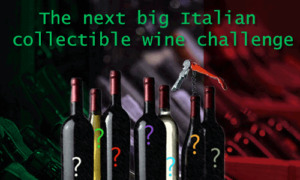A taste of domaine Biguet’s Mousseux Brut, Saint-Péray is bubbling and buzzing again
Rhône gem
A wine once enjoyed by Queen Victoria and other royals slipped under the radar for almost a century. Yet, Saint Péray’s wheel of fortune is turning. Saint-Péray’s winemakers did the necessary groundwork, and one can easily say Saint-Péray is bubbling and buzzing again.

On a recent visit to the Rhône, I cheered Saint Péray’s -often world-class- white wines. Saint Péray only produces white wines. The wines from Saint-Péray, however, are little-known on the international market and Saint-Péray’s sparkling wines are even rarer. Actually, there are two types of white Saint Pérays: a dry, balanced, aromatic, still wine, and an aromatic (think white flower) sparkling wine.

Domaine Biguet Saint-Péray Mousseux Brut
I tasted Domaine Biguet’s Saint-Péray Mousseux Brut wine (imported in The Netherlands by Rhone Value Wines) in Paushuize, a fitting location for attractive bubbles made from 100% Marsanne grapes. Paushuize or house of the pope in English is the restored Utrecht residence of the only Dutch pope, Pope Adrian VI.
Domaine Biguet’s Mousseux Brut is made in the tiny hamlet of Le Biguet, just south of Saint Péray, by Jean-Louis Thiers. Jean-Louis has 7 ha of vineyards in Saint-Péray -just below the ‘Crussol’ escarpment-, as well as in Cornas and the Côtes-du-Rhône. All the vines are between 30 and 70 years old. Domaine du Biguet’s passion for bubbles has never stopped. Bottle-fermented, méthode traditionelle, sparkling Saint Péray represents 75% of Thiers’ wine production.
Marsanne Blanc -also called Grosse Roussette in the Savoie, Avilleran in l’Isère, Roussette de Saint Péray- and Roussanne Blanc, are the only two allowed grape varieties in the Saint Péray appellation. Marsanne always has bitterness, whereas Roussanne is more aromatic, fruity, and peachy. Typical for Saint-Péray is an articulated, vinous, softness on the palate. In the Mousseux the bubbles are fine, well-integrated, and creamy. Saint-Péray Mousseux’s are made in the same way as Champagnes, using the ‘méthode traditionelle’, yet they taste different. Saint-Péray Mousseux can best be described as characterful, in style varying from fresh, floral, and medium-bodied to powerful and full-bodied.

The key factor is to retain the acidity
In a way, Saint Péray is all about texture and balance. The acidity is never very high in a Saint Péray, but if they have enough balanced acidity they stand out. While tasting this wine, your palate tiptoes around a honeysuckle floral freshness, aromas of summer fruits (citrus, apricot, apple, pear). There is a textured, creamy minerality and traces of pleasant almond bitterness in the finish. Saint Péray’s become more flavorful, rich in texture, and opulent after ageing. Long lees ageing adds depth and concentration, as well as aromas of honey, quince, and nuts.
The granite and schist soil outlines a unique terroir
The Saint Péray appellation is located on the right bank of the Rhône, where the granite slope of Cornas continues into the town of Saint Péray to the Biguet district in Toulaud. This hill is separated from a limestone massif dominated by the remains of Crussol castle in the Mialan valley.
In soil and terroir terms, there are two main zones. There are two types of terroir on the AOC Saint Péray. One side of the valley is granite, on the other limestone, with the ruined 12th century Château de Crussol on top. The Marsanne and Rousanne vines grow on both soils. Limestone gives freshness and tension to the wine and granite delivers ripeness and salinity. Yields are low, 45 hl/ha or less. Drought tends to be a problem for producers as it can have a negative impact on annual production.

Also, Napoleon Bonaparte had a penchant for the local wine of Saint-Péray
Domaine Biguet’s Mousseux Brut is in fact successor to the first Saint-Péray wines. Vines grow here since the Gallo-Roman era. Pliny the Elder wrote in Natural History (Naturalis Historia) about the wine of Saint-Péray. And, Napoleon Bonaparte developed an interest in drinking the still wines of Saint-Péray while a young cadet in Valence. The wines become sparkling around the 1820s. Viticulturalist and négociant Alexandre Faure experimented using 100 barrels of wine to add effervescence to still wines. At the time this sparkling innovation is quite unique in the Rhône Valley.
It also leads to a new category: Saint-Péray Grand Mousseux or Champagne Saint-Péray, as the sparkling wine was called at the time. Grand Mousseux or Champagne Saint-Péray is not an immediate success. Bottles break under pressure, and there are other technical difficulties.

Past royal customers
Between 1841 and 1846 Saint-Péray sparkling wines gather momentum. They swiftly gain an excellent reputation and start to rival Champagne in quality and price. Saint-Péray becomes one of the most expensive sparkling wines in France. By 1850, Saint-Péray Mousseux has customers like Emperor Frans Joseph, Queen Victoria, and Richard Wagner. The vineyard area of Saint-Péray augments considerably to 172 ha to keep pace with demand. Some special parcels or lieux-dits are differentiated, such as the Chapelle de Crussol, Solignaes, Coteaux de Hongrie, and Coteau Gaillard.
Demand goes steadily downhill around World War I
The aftershocks of the Phylloxera epidemic and fraudulent traders -who try to sell inferior wine as Saint Péray- affect the level of demand negatively. Things don’t improve, even not when Saint-Péray becomes one of the first recognised French appellations in 1936. Saint Péray slips under the wine radar. The vineyard area shrinks to circa 50 ha.

Saint Péray, the long-forgotten appellation of the Rhône valley
Saint Péray’s fall into oblivion might be its advantage now. Saint Péray’s wines represent good value for money. At just under 90 ha under vine, Saint Péray a small appellation, but a growing one, also in importance. It looks like Saint-Péray is bubbling and buzzing again.


